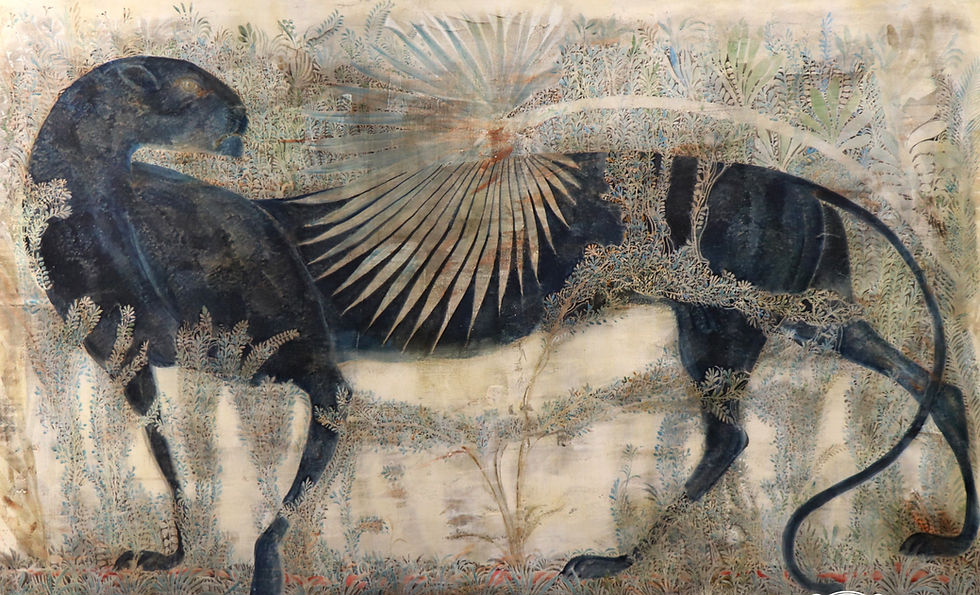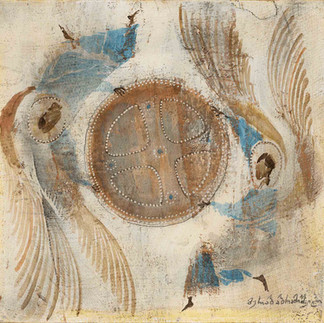Georgian Painters: From Pirosmani to the Modern Masters
- ORIENTO Travel & DMC
- Jul 20
- 4 min read
Updated: Aug 13

Georgia, a land of dramatic mountains, ancient churches, and vibrant folklore, has long been a wellspring of creativity. Nowhere is this more evident than in its visual arts, particularly in the works of its painters, who captured the soul of the Georgian people with brush and canvas. From the haunting simplicity of Niko Pirosmani to the lyrical modernism of Lado Gudiashvili and the vivid landscapes of Elene Akhvlediani, Georgian painters have woven a unique narrative—one that blends East and West, tradition and experimentation, realism and dream.
Niko Pirosmani: The Self-Taught Visionary
No discussion of Georgian painting can begin without Niko Pirosmani (1862–1918), the legendary self-taught artist whose life and art are steeped in both myth and melancholy. Born into poverty in the Kakheti region, Pirosmani received little formal education and worked as a herdsman, railway conductor, and house painter before devoting himself to art. He never achieved success in his lifetime, often trading paintings for meals or lodging, and died destitute.
Yet Pirosmani’s work has become a cornerstone of Georgian identity. His naive style—deceptively simple yet emotionally profound—captured the lives of ordinary people: merchants, nobles, milkmaids, wrestlers, and animals. Using cheap oil paints on black oilcloth, Pirosmani developed a style that is instantly recognizable: flat, frontal figures, minimal perspective, and a deep, haunting stillness. One of his most iconic works, The Feast of the Five Princes, reveals his unique ability to blend folk storytelling with symbolic grandeur.
Though once dismissed as a primitive or outsider artist, today Pirosmani is revered as a national treasure, a poetic chronicler of Georgia’s rural soul.
Elene Akhvlediani: Urban Landscapes with a Tender Gaze
While Pirosmani painted the rural past, Elene Akhvlediani (1898–1975) turned her eyes to the city—specifically to old Tbilisi. Trained in Moscow and Paris, Akhvlediani blended French post-impressionism with Georgian lyricism to create vivid urban scenes filled with color, nostalgia, and structure. Her paintings of crooked balconies, cobbled streets, and sunlit courtyards capture the spirit of a city that is both ancient and ever-changing.
Akhvlediani was also a prominent stage designer and illustrator. Her contributions to Georgian theatre were significant, and her work in book illustration helped bring literary classics to visual life. But it is her paintings of Tbilisi’s architecture and the Georgian landscape that remain most beloved. In her hands, the city becomes more than a place—it becomes a memory, a mood, a character.
Lado Gudiashvili: The Mythmaker of Modernism
Contemporary with Akhvlediani, Lado Gudiashvili (1896–1980) brought a different sensibility to Georgian painting. Educated in Tbilisi and Paris, he fused Georgian themes with the swirling elegance of Art Nouveau, Symbolism, and Eastern miniatures. Gudiashvili’s works are dreamlike, often erotic, and infused with a sense of myth and performance.
His figures—gypsies, dancers, mythic beasts, and masked revelers—seem suspended in time, inhabiting a parallel world where folklore and fantasy intersect. Gudiashvili's palette—rich in purples, reds, and deep earth tones—adds to the theatrical effect. He worked extensively in fresco as well, most notably on the interior of the Kashveti Church in Tbilisi, where biblical scenes are reimagined through his visionary lens.
Gudiashvili was also a fierce patriot. During the Soviet era, when many artists were forced into conformity, he managed to retain his artistic individuality while subtly embedding Georgian motifs and cultural references into his works. His legacy remains influential across generations of artists in Georgia and beyond.
David Kakabadze and the Modernists
If Pirosmani captured the past and Akhvlediani and Gudiashvili represented tradition transformed, David Kakabadze (1889–1952) was the vanguard of the future. A scientist, inventor, and artist, Kakabadze experimented with abstract forms, optical devices, and early forms of multimedia. Educated in Paris, he was influenced by Cubism and Constructivism, but always remained rooted in the Georgian landscape and spirit.
His works combine geometric abstraction with a deep reverence for nature. In paintings like Imeretian Landscape, Kakabadze achieves a fusion of traditional themes with avant-garde technique. He also pioneered work in 3D cinema and chromatic photography, making him one of the most innovative figures in early 20th-century Georgian art.
The 20th century also saw the rise of painters like Korneli Sanadze and Ucha Japaridze, whose careers were shaped by the constraints and opportunities of the Soviet period. Japaridze (1906–1988), a prolific artist and academic, is known for his portraits, especially of Georgian writers, peasants, and workers, executed in a restrained, realist style. His work adhered more to Socialist Realism, yet he brought psychological depth and local color to otherwise formulaic themes.
Contemporary Echoes
Today, the legacy of Georgia’s great painters continues in the works of contemporary artists who are reinterpreting tradition through digital art, installation, and conceptual practices. Artists like Merab Abramishvili, though less known internationally, continue to explore the tension between identity, history, and modern aesthetics. The Tbilisi art scene—supported by galleries, residencies, and institutions like the Tbilisi History Museum and National Gallery—is a vibrant laboratory for the evolving Georgian visual language.
Georgian painting reflects the country’s complex history and rich culture. It is a mirror of both struggle and joy, filled with folk memories, urban dreams, religious iconography, and revolutionary innovation. From Pirosmani’s humble portraits to Kakabadze’s geometric landscapes and Gudiashvili’s fantastical imaginings, these artists have given Georgia a visual voice—one as poetic, bold, and enduring as the mountains that rise from its soil.
%20(2).png)



















































Comments